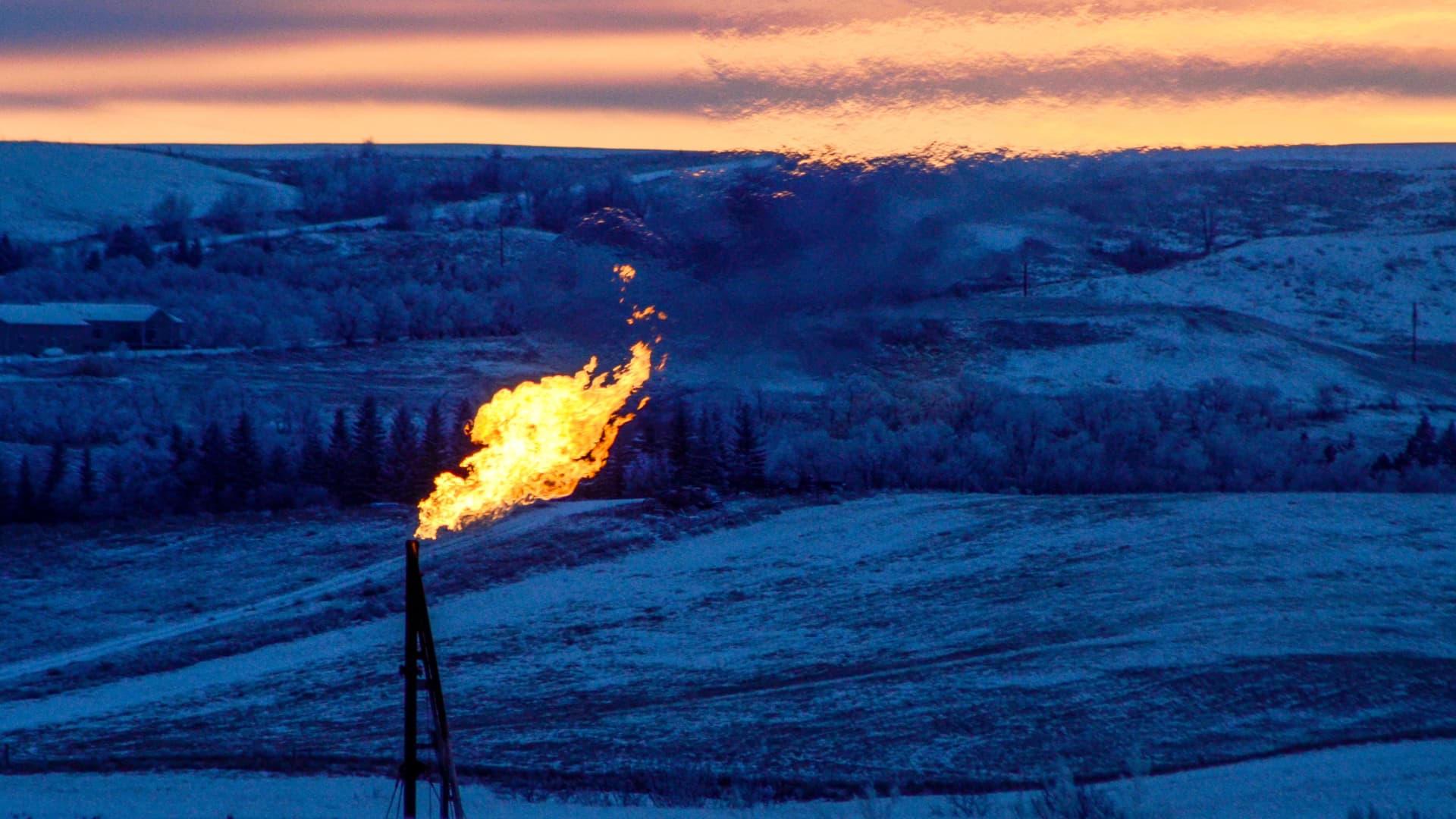
A natural gas flare on an oil well pad burns as the sun sets outside Watford City, North Dakota January 21, 2016.
Andrew Cullen | Reuters
Oil prices were largely flat Tuesday after Libya restarted production at a major oilfield and as output slowly recovered in North Dakota after a winter storm.
The West Texas Intermediate contract for March lost 39 cents, or 0.52%, to settle at $74.37 a barrel. The Brent contract for March fell 51 cents, or 0.64%, to settle at $79.55 a barrel.
Libya restarted production at the Sharara oilfield on Sunday, which has the capacity to produce 300,000 barrels per day. The oilfield was shut down for about two weeks due to protests.
Oil output is also slowly recovering in North Dakota after a blast of Arctic weather hit the third-largest crude producing state in the U.S. Oil production on Tuesday was down by 250,000 to 300,000 barrels per day, compared to 700,000 bpd last Wednesday, according to the state pipeline authority.
Lynn Helms, North Dakota’s director of Mineral Resources, said it could take a month for production to return to normal: “January is going to be a very, very bad month in terms of production numbers,” Helms said in a webinar Friday.
Prices also edged lower as reports circulated that Israel had proposed a two-month pause of fighting in Gaza in exchange for the release of all remaining hostages. Traders are following the war closely for any signs that it could erupt into a regional conflict that disrupts oil supplies.
Hamas has rejected the proposal, a senior Egyptian official told the Associated Press. The militant group is demanding that Israel end its offensive and withdraw from Gaza, the Egyptian official said.
U.S. envoy Brett McGurk is travelling in the Middle East discussing the potential for another hostage deal and humanitarian pause in the fighting, according to the White House.
“The discussions are very sober and serious about trying to get another hostage deal in pace,” White House National Security Council spokesperson John Kirby told reporters during a briefing Tuesday.
Fierce fighting continued in southern Gaza as the Israeli military encircled the city of Khan Younis. At least 21 Israeli soldiers died in a single attack Monday, the biggest loss of life for the military since the offensive began.
Oil prices had rallied about 2% on Monday after a suspected Ukrainian drone strike against a major Russian fuel terminal on the Baltic Sea highlighted the geopolitical threats to crude supplies.
“The attack by Ukrainian forces on the Russian company Novatek in the Baltic is a timely reminder that a bigger, more influential war is still waging on,” John Evans with PVM Oil Associates wrote Tuesday in a note.
The U.S. and Britain on Monday also launched another round of airstrikes against Houthi militants in Yemen. The militants have repeatedly attacked commercial vessels in the Red Sea over the past two months, forcing container ships and oil tankers to pause transit through the key waterway.
In a bullish sign for the market, China is considering a $278 billion rescue package to boost its struggling stock market, according to Bloomberg News. A rescue package in China would raise oil demand expectations, said Phil Flynn, an analyst with the Price Futures Group. Traders have worried for months that a slowing economy in China would bring down crude demand.
Don’t miss these stories from CNBC PRO:

